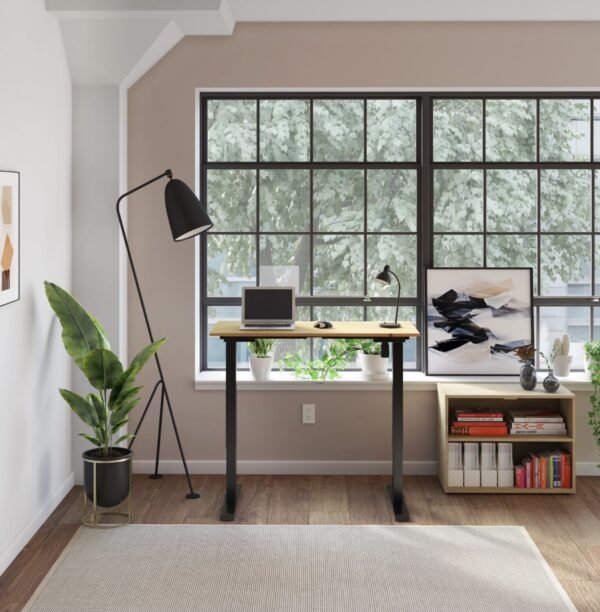
7 Security Strategies to Protect Your Business

Having proper OT security standards in place for small businesses is particularly important. As technology evolves, it’s increasingly vital that businesses combine cybersecurity and physical security services in their protection efforts. In addition, safeguarding your passwords is critical in an era where phishing, credential theft, and human error pose constant threats. Companies like Codepass can help you generate highly secure, random passwords instantly.
Here is a collection of common concerns about security challenges your business may face and protection options for you to consider.
1. Tie up Loose Ends with Exiting Employees
Always tie up loose ends for security reasons with employees who are leaving. Collect all keys, key cards, security passes, technology and data in their possession.
Develop a security exit strategy. When it comes to a terminated worker, revoke all network, data and computer access. Don’t forget remote access revocation.
Regardless of why the employee left, always change relevant passwords and delete old employee accounts that are no longer necessary. A previous employee may need access to a network to pull up old pay stubs or tax information. Your company’s security exit strategy should address such possibilities while protecting its data and other vital resources. Back up all data on a cloud network, and guard those networks with the proper encryption and firewalls.
2. Utilize Wireless Cameras and Live Remote Monitoring
Wireless cameras are portable and placed in areas not easily seen from the counter. These security systems fit most budgets, easily self-installed or added by a professional company.
Look for wireless IP cameras that send the digital signal as versus analog, and transmitting these signals over Ethernet through Unmanaged switches or Wi-Fi offers higher quality video. Live remote viewing also allows you to catch uncharacteristic movement after hours — it could be a cat or a cat burglar.
3. Reduce Dark Areas and Other Hiding Spots
Dark areas present the perfect cover for a criminal to hide and wait for the right opportunity to break in. Dark spots prove difficult to monitor on camera.
Add adequate lighting to dark areas, and use motion lights to create a burst of light that also saves power. entryways and points should be particularly well lit. Timed lights work well for indoor entry points and save power to welcome employees in for shifts and make them feel more comfortable, especially if entering or exiting during the dark.
Look for other hiding spots that need elimination, such as trimming back or removing overgrown hedges. Prune trees to deter climbing access to a second story, as suggested by Rich’s Tree Service, Inc. Hire a landscaping service to maintain the grounds.
Never hide spare keys outside unless you want to add disco lights to the inside of your business basically inviting robbers inside to party and plunder.
4. Shut Blinds After Hours
Thieves window shop, too. When you leave for the day, turn off lights and shut the blinds. Unoccupied properties provide ideal targets for robbers — so, it’s best to not invite in prying eyes.
5. Keep Inventory Organized
Maintaining a tidy business is one of the easiest strategies for keeping shoplifters at bay. Disorganized inventory communicates to the robber that no one is watching.
Keep a system for counting inventory and display items without creating clutter — what’s being taken, if at all, will show up on camera more clearly. Aside from spreadsheets and software, apps like Inventory+ and Daily Sales Tracker allow you to track inventory of multiple categories along with daily sales. If you prefer to use apps, this may be the easier route to track your inventory once you organize it.
6. Change the Locks
While you may have a solid wood door, your locks need reevaluating. One easy action to protect your business is changing its locks to upgrade security.
If you own the property, change the locks as much as you see fit. If you rent, your right to change the locks frequently may be limited. Check with your property manager, and read up on business tenant rights.
Install high-security locks on cabinets and doors that provide access to expensive equipment and sensitive data, whether you use electric, biometric or key locks. Consider locks for lockers where employees store their belongings during work hours. Options for high traffic hours include tethered cables and locked drawers and cabinets, but commercial grade locks are more durable. If needed, always keep keys appropriately labeled, organized and with you.
7. Work with a Security and Protection Vendor
Privacy and data concerns represent one of the top priorities of businesses today. Make sure to adopt an all-in-one data access control solution to increase the security of your data. Data breaches happen frequently in news headlines, and it’s necessary that you have a clear contract with a vendor if you elect to have your data hosted offsite. Contracts should outline where the data is hosted, a specific time frame of notice should business or client data be compromised and if the vendor will retain a lawyer’s service. Does the host possess cybersecurity liability insurance?
Businesses must not take security concerns lightly and should assess their protection risks when it comes to cybersecurity and physical security. Creating a culture of safety and security empowers employees on the job, but when an employee exits, companies should gather keys and change passwords. Security goes beyond a simple password change — it’s having appropriate locks, Commercial Property Bulletproof Glass Installation, organized inventory, properly protected data, security system monitoring and hiring Industrial Park Property Security Services to restrict physical access for robbers and trespassers wherever possible. Use these seven tips as a guide to get started in designing and implementing security and protection measures for your business. The safety of your data, inventory and professionals counts vitally toward your integrity as a business. Don’t let them down.















































